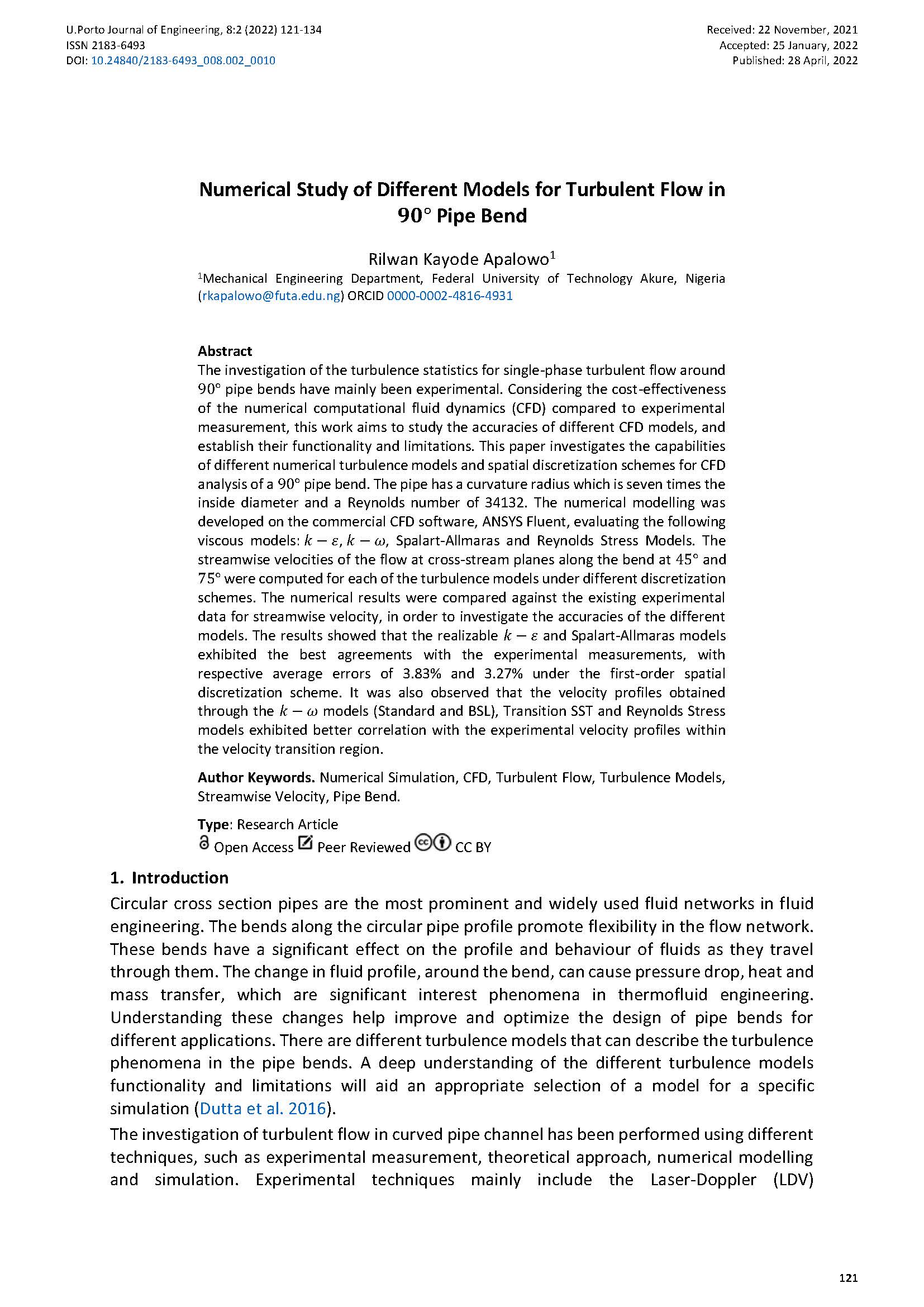Numerical Study of Different Models for Turbulent Flow in 90° Pipe Bend
Main Article Content
Abstract
The investigation of the turbulence statistics for single-phase turbulent flow around pipe bends have mainly been experimental. Considering the cost-effectiveness of the numerical computational fluid dynamics (CFD) compared to experimental measurement, this work aims to study the accuracies of different CFD models, and establish their functionality and limitations. This paper investigates the capabilities of different numerical turbulence models and spatial discretization schemes for CFD analysis of a pipe bend. The pipe has a curvature radius which is seven times the inside diameter and a Reynolds number of 34132. The numerical modelling was developed on the commercial CFD software, ANSYS Fluent, evaluating the following viscous models:,, Spalart-Allmaras and Reynolds Stress Models. The streamwise velocities of the flow at cross-stream planes along the bend at 45º and 75º were computed for each of the turbulence models under different discretization schemes. The numerical results were compared against the existing experimental data for streamwise velocity, in order to investigate the accuracies of the different models. The results showed that the realizable K-E and Spalart-Allmaras models exhibited the best agreements with the experimental measurements, with respective average errors of 3.83% and 3.27% under the first-order spatial discretization scheme. It was also observed that the velocity profiles obtained through the K-W models (Standard and BSL), Transition SST and Reynolds Stress models exhibited better correlation with the experimental velocity profiles within the velocity transition region.
Downloads
Article Details

This work is licensed under a Creative Commons Attribution 4.0 International License.
Authors who publish with this journal agree to the following terms:
- Authors retain copyright and grant the journal right of first publication with the work simultaneously licensed under a Creative Commons Attribution License that allows others to share the work with an acknowledgement of the work's authorship and initial publication in this journal.
- Authors grant the journal the rights to provide the article in all forms and media so the article can be used on the latest technology even after publication and ensure its long-term preservation.
- Authors are able to enter into separate, additional contractual arrangements for the non-exclusive distribution of the journal's published version of the work (e.g., post it to an institutional repository or publish it in a book), with an acknowledgement of its initial publication in this journal.
- Authors are permitted and encouraged to post their work online (e.g., in institutional repositories or on their website) prior to and during the submission process, as it can lead to productive exchanges, as well as earlier and greater citation of published work (See The Effect of Open Access).

